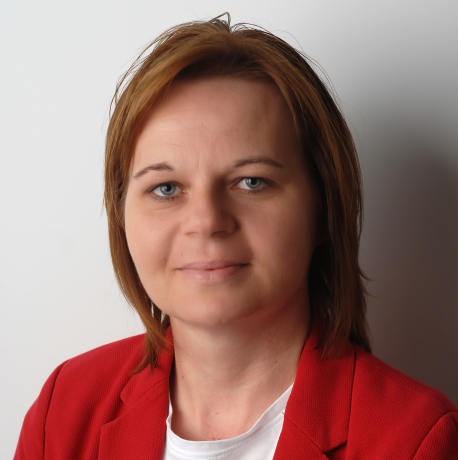Stanowisko: Asystent badawczy
Pokój: 306
Telefon: 42 631 35 21
E-Mail: katarzyna.lisik@p.lodz.pl
Wykształcenie:
- Dyplom magistra (2008) – praca magisterska nt „ Ocena poziomu spontanicznych uszkodzeń materiału genetycznego limfocytów krwi obwodowej pochodzących od osób zdrowych i chorych na nowotwory” obroniona na wydziale Biologii i Ochrony Środowiska na Uniwersytecie Łódzkim.
Wybrane publikacje:
-
Lisik K., Cichowicz R. Microbiological Risk in Rooms with Mechanical Ventilation. Journal of Ecological Engineering 2022, 23(10), 164–171 https://doi.org/10.12911/22998993/152541
The condition of air quality depends on many external (the amount of pollutant emissions, intensity and type of physico-chemical changes taking place in the atmosphere and large-scale movement of air pollutant masses) as well as internal factors (such as finishing materials, room equipment, heating systems, ventilation systems, and the presence of the humans themselves). As a result, there are various risks related to air quality, including the most important ones related to microbial contamination. For this reason, it was decided to analyze the quality of internal air in terms of microbiological contamination that may occur in university lecture halls with mechanical supply and exhaust ventilation. The analysis also took into account the impact of mechanical ventilation on physical parameters such as temperature, relative humidity as well as the concentration of PM10 and PM2.5 particulate matter pollutants, thus determining the impact of the tested parameters on human health and well-being. All the obtained results were compared with the applicable permissible standards and conclusions were drawn regarding the improvement of the quality of the indoor air microclimate.
-
Lisik K., Cichowicz R.: Microclimate in the Pool Hall. 2022, District Heating, Heating, Ventilation (Ciepłownictwo, Ogrzewnictwo, Wentylacja) 53/7-8:46-50. DOI: 10.15199/9.2022.7-8.6.
In todays world, especially recently in the era of a pandemic, people are increasingly both looking for and using active forms/modes of life to spend their so-called „free time”. Recently, not only among children and adolescents, but also among adults, it can be noticed that sports activity has become a priority. One of the most frequently chosen sports activities is swimming (both recreational and sports), which can now be carried out in many larger or smaller indoor swimming pools. As a result, more and more people stay in rooms/buildings with a specific microclimate, favoring the emergence/development of various types of microbial infections (in particular, various types of mycoses). To prevent this, in such facilities as indoor swimming pools, it is very important to correctly select mechanical ventilation, which would take into account numerous external and internal parameters of the room. As a consequence, the task of pool ventilation is to maintain a proper microclimate inside the pool hall. At the same time, it should be remembered that unfavorable temperature and humidity conditions may contribute to the discomfort of pool users, but also to the development of various types of microorganisms. What is more, moisture and fungus may have a negative effect on the building structure and contribute to the destruction of building partitions, and the physical and biological corrosion of building elements may threaten the safe use of the facility. Therefore, in order to check the scale of these phenomena, it was decided to analyze the microclimatic and microbiological conditions in the large building of the swimming pool hall (in the building of the Academic Sports and Didactic Center „Zatoka Sportu” in Łódź). Thanks to this, information was obtained about the temperature range, relative humidity, air flow velocity and the number of microorganisms present in the air in the swimming pool hall both in time (with low load on the sports facility and during the greatest load on the facility, i.e. when the greatest sports activity was carried out in it), as well as depending on the location and distance/height from the pool basin. It seems that performing this type of measurements may be helpful, and maybe even necessary, to pay attention to the importance of the correct selection, design and use of mechanical ventilation in this type of facility.
- K. Lisik; A. Krokosz „ Application of medicine carbon nanoparticles in oncology and regenerative”.International Journal of Molecular Sciences.2021 https://doi.org/10.3390/ijms22158341;
- 2020 r.- członek zespołu w projekcie badawczym pt.” Biomedycyna, Środowisko i Zdrowie. Teoria i Praktyka. oraz autorka rozdziału w monografii naukowe „Nanodiamenty w terapii celowanej”;
- 2007r.- Wyróżnienie na XXXVI Międzynarodowym Seminarium Kół Naukowych w Olsztynie za pracę nt.” Podatność limfocytów dawców młodych i starszych na stymulację fitohemaglutyniną”;
- 2007r.-współautor doniesienia na XIII Zjeździe Polskiego Towarzystwa Biofizycznego ( Streszczenie w Current Topics In Biophysics (2007); Vol.30,B27
